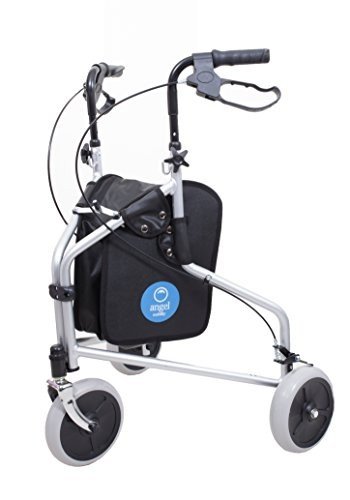A Comprehensive Guide to Buying a Mobility Scooter
Mobility scooters have actually become a vital tool for many people seeking to enhance their independence and mobility. With a vast variety of models and features available, picking the right mobility scooter can be daunting. This post offers an informative guide to assist consumers browse their choices, evaluate their requirements, and make an informed purchase.
Comprehending Mobility Scooters
Mobility scooters are electric automobiles developed for individuals who experience mobility obstacles. They are especially beneficial for seniors, those with impairments, or individuals recuperating from injuries. Mobility scooters can vary widely in terms of style, features, and rates.
Types of Mobility Scooters
Before starting a purchase, it's vital to understand the various types of mobility scooters available:
Three-Wheel Scooters:
- Generally more maneuverable in tight areas
- Lightweight and portable
- Perfect for indoor usage
Four-Wheel Scooters:
- Offer greater stability and balance
- Ideal for outdoor usage over different surfaces
- Usually have a longer battery life
Foldable/Portable Scooters:
- Designed to be easily transported and kept
- Can frequently suit the trunk of a vehicle
- Suitable for those who travel regularly
Heavy-Duty Scooters:
- Built to accommodate larger people
- Often included more robust functions for outdoor use
- Typically equipped with bigger batteries for extended range
Factors to Consider When Buying a Mobility Scooter
1. Weight Capacity
Choose a mobility scooter that can support the user's weight. The majority of scooters have a weight limitation ranging from 250 to 500 pounds. It is essential to make sure that the scooter can accommodate the user comfortably.
2. Range and Battery Life
The range is how far the mobility scooter can take a trip on a single charge. Common varieties vary in between 10 to 30 miles. Consider the user's daily activities and choose a scooter with an appropriate range.
3. Scooter Dimensions
Consider the size of the scooter, including its weight and dimensions. A more compact scooter may be perfect for narrow corridors and tight areas, while larger designs use additional stability and convenience.
4. Terrain Capability
Assess where the scooter will primarily be used. If the user plans to travel primarily on pavement, a lightweight design may be enough. However, if the user needs to pass through gravel or uneven surface areas, think about a four-wheel scooter built for off-road usage.
Leading Features to Look For
Comfort
- Adjustable Seats: Look for scooters with cushioned and height-adjustable seats to make sure comfort throughout travel.
- Armrests: These enhance safety and support while navigating.
Security and Visibility
- Headlights and Taillights: Essential for nighttime use.
- Turn Signals and Reflectors: Improve visibility and security while on the roadway.
User-Friendly Controls
- Joystick or Drive Controls: These need to be intuitive and easy to control.
- Easy-to-Read Displays: A control board that reveals battery life, speed, and distance can improve the user experience.
Extra Features
- Storage Compartments: These provide added benefit for carrying personal items while on the go.
- Weather condition Protection: Consider models with rain covers or windscreens if utilized in variable weather.
Cost Considerations
When budgeting for a mobility scooter, costs can vary anywhere from ₤ 500 to over ₤ 5,000 depending upon the model, features, and brand name. Additional costs might consist of:
- Extended Warranty: Protects against defects and can save cash in the long run.
- Devices: Optional functions, such as upgraded seats, lights, or storage options.
| Feature | Cost Range |
|---|---|
| Fundamental Models | ₤ 500 - ₤ 1,500 |
| Mid-Range Models | ₤ 1,500 - ₤ 3,000 |
| High-End Models | ₤ 3,000 - ₤ 5,000 |
Financing Options
Lots of sellers offer financing strategies, and some regional government efforts may provide grants or help for those in requirement. Investigate potential monetary support with community resources or mobility service companies.
Frequently asked questions about Buying a Mobility Scooter
What is the distinction in between a mobility scooter and a wheelchair?
Mobility scooters are motorized and allow users to browse separately, while wheelchairs might require physical support or manual operation.
How do I preserve a mobility scooter?
Regular upkeep involves examining battery life, cleaning the scooter, and checking tires and brakes. Constantly refer to the user handbook for particular guidelines.
Can mobility scooters be used inside?
Yes, numerous models are designed for both indoor and outside usage. Nevertheless, three-wheel scooters tend to be much better matched for indoor navigation due to their tighter turning radius.
Are mobility scooters covered by insurance?
Some insurance plans cover a part of the costs for mobility scooters if they are considered clinically needed. Contact your service provider for particular information.
How quickly can a mobility scooter go?
The majority of mobility scooters have an optimal speed varying from 4 to 8 mph. However, the appropriate speed might vary depending upon regional guidelines.
Getting a mobility scooter can substantially boost one's independence and quality of life. By understanding the types, functions, and costs connected with mobility scooters, potential buyers can make educated choices that match their needs and choices. disabled scooters for sale and comprehensive research study are crucial to ensuring complete satisfaction with this crucial investment.

